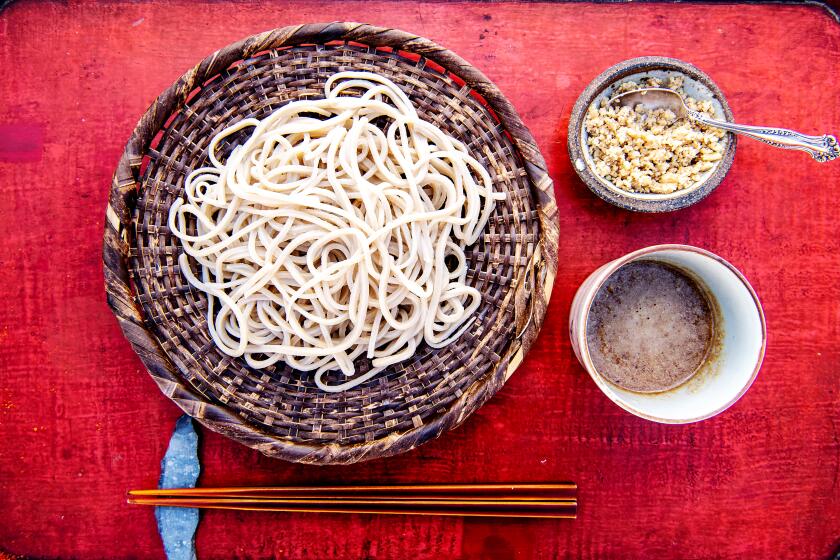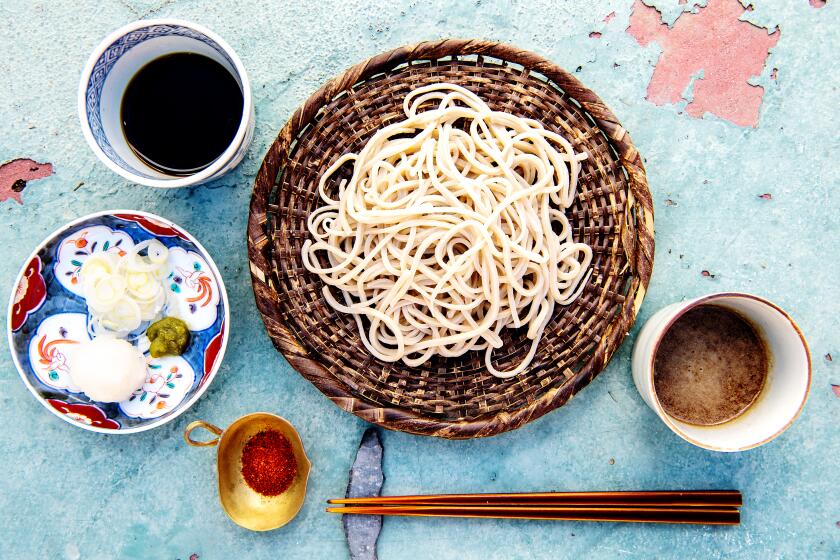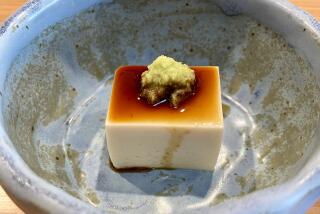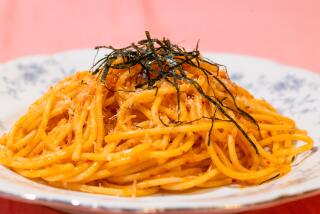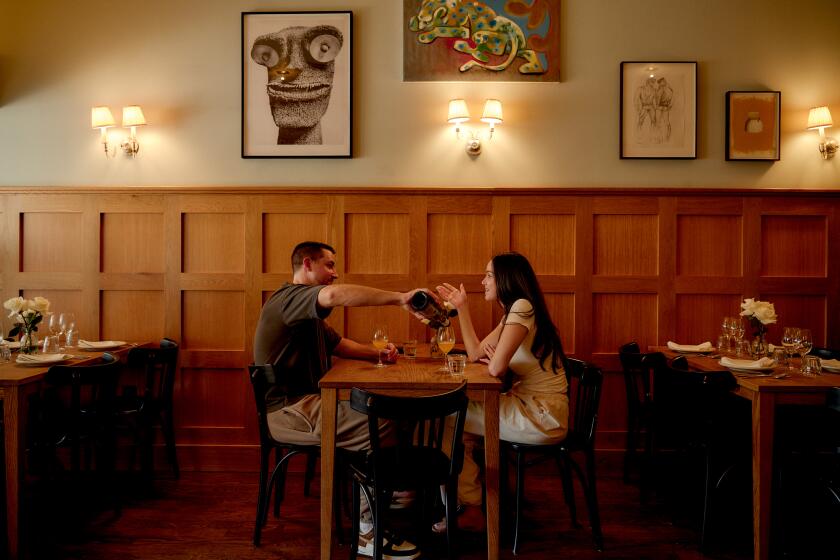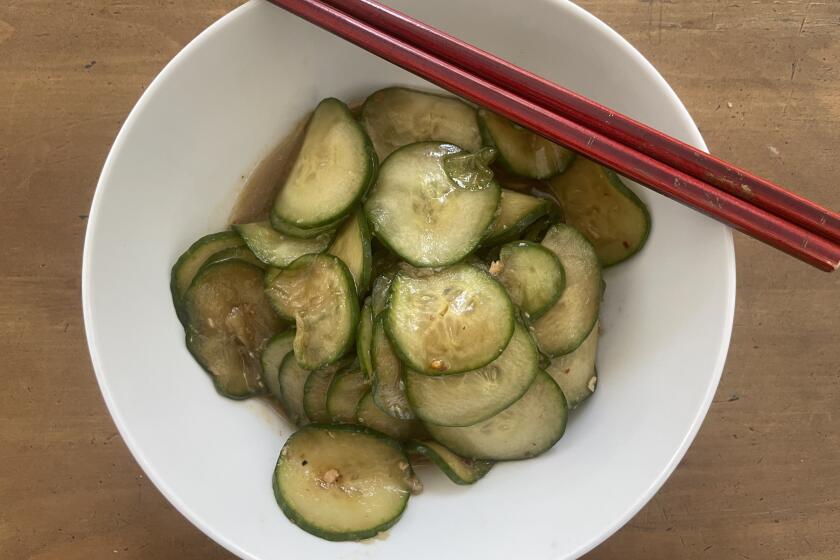Pursuing the way of soba
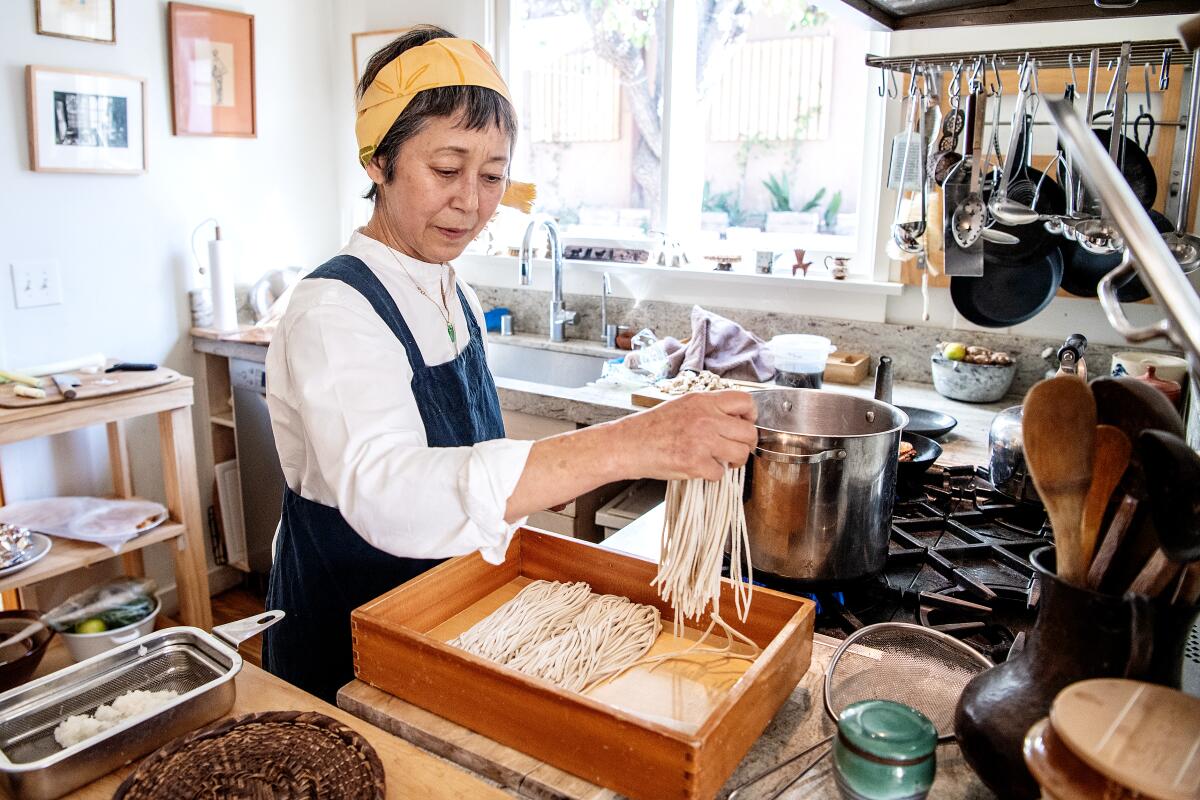
After a three-hour bullet train ride, I stepped into the shivering cold of snow country in northern Japan. Still jet-lagged from the 11-hour plane ride from Los Angeles to Tokyo, I wasn’t prepared for this bone-chilling weather. But I also knew I was shivering from the sheer joy and anticipation of eating good soba. “Soba” means buckwheat and is also the name of the long, beige Japanese noodle. I am known to travel the distance to eat soba, but this trip meant more than that.
It was early March in 2020, just before COVID-19 started to spread in the U.S. I was back in Tokyo to sign papers for the sale of my parents’ house and witness the demolition of the place I had called home all my life. My mother had died a few months before and my father 18 months before that. I felt like a ship that had lost its home port.
But while I was there, my old friend and veteran soba miller Yoshitomo Arakawa called to offer his condolences and invite me to visit the soba co-op he had started in Kazuno in Akita prefecture, about 300 miles north of Tokyo. “Come taste our soba, sip some jizake [locally brewed sake] and take a dip in the hot springs,” he said, offering me the remedy for a saddened spirit. At his mention of soba, I already felt uplifted and accepted his invitation.
I was greeted by the founding members of the small soba co-op: Hiromi Sato, the farmer; Arakawa-san, the miller; and Hideyuki Aoki, the chef. The first thing on the agenda was to visit the soba field. Silver grass was growing in the surrounding wetlands, its droopy tassels shimmering in the afternoon light, but otherwise the harvested field lay dormant in a blanket of snow. Sato-san explained how he plants buckwheat and rice in rotation — a practice that helps to regenerate the soil while providing two income-producing crops a year. He and Arakawa-san were cultivating a soba for the region, which Arakawa-san would then mill into premium-grade local soba.
The natural characteristics of the soil and climate affect the flavor and chew of soba, just as they do with grapes; such is the terroir of soba. Aoki-san, the chef, added, “Ninety-nine percent of good soba is the quality of the soba itself.” After his declaration, he seemed ready to go back to work and make soba. And I was ready for a good slurp.
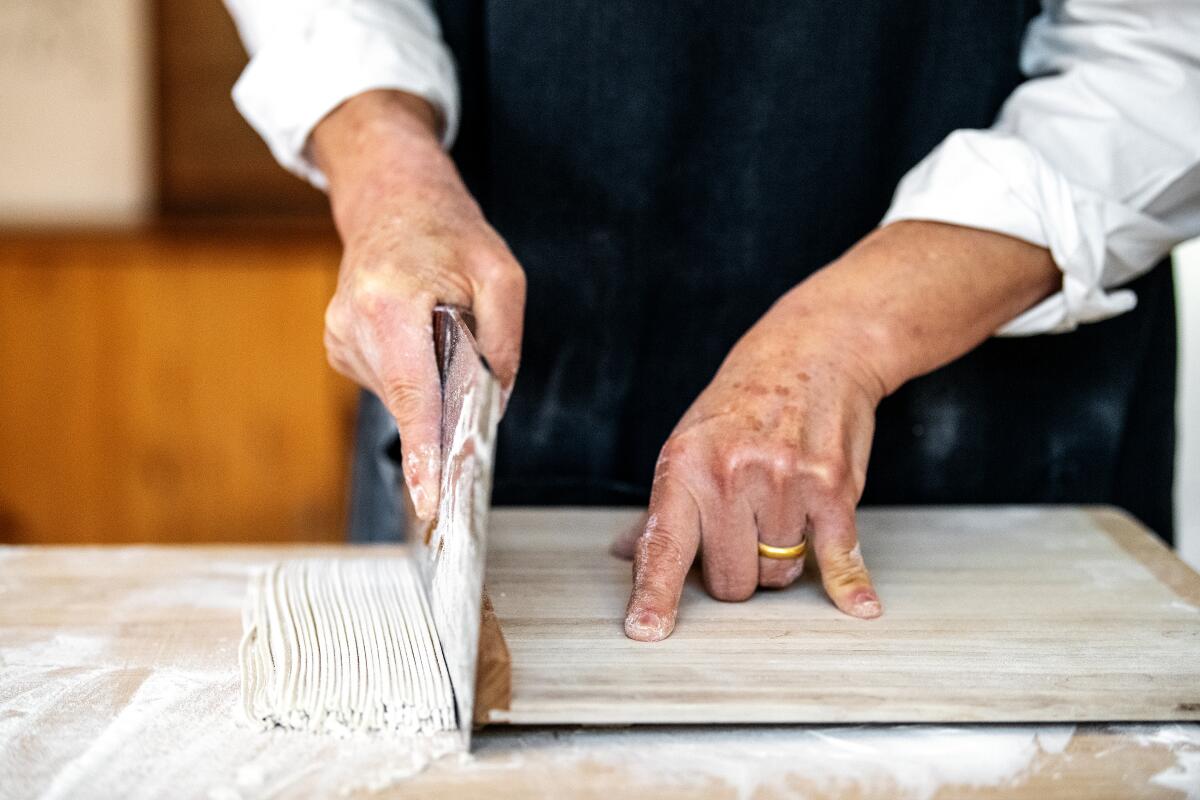
Aoki-san’s shop — more like a shack — was next to the milling facility. There was no sign on the door, and a simple handwritten menu pasted on the wall offered plain soba served hot in a soup and plain soba served cold with a dipping sauce and condiments, with a few other options.
There are three basic characteristics to look for in artisan-style soba: hikitate (freshly stone-milled), uchitate (freshly made by hand) and yudetate (freshly cooked and served immediately).
As I sat and sipped the soba-mae (a sake term used exclusively in soba shops), I watched Aoki-san cut the 100% pure soba dough. This soba was fragrant and chewy, with good “nodogoshi” — the pleasant sensation that you feel when noodles travel down your throat. He displayed such mastery that I was surprised to hear that his last soba shop in Tokyo had had financial difficulty. He had recently moved here with his aging parents to join the co-op, making the decision purely on instinct and Arakawa-san’s words. Following a path that may have meandered but was still the way of soba, he was determined to make it this time.
The old woman helping in the kitchen was Aoki-san’s mother. She had supported two generations of soba masters, her husband and son. She showed me her fingers and said, laughing, “I have no fingerprints. They are worn out from washing so many dishes.”
My story was somewhat similar to Aoki-san’s. Although I had been eating soba all my life, I didn’t know what buckwheat looked like nor that it isn’t even a grain but the seed of a plant that is related to sorrel and rhubarb. All of that changed when I took a soba-making workshop on a whim while visiting my parents in Tokyo in 2008. I was coming out of a bad experience, having produced a film that opened the week of the market crash. It flopped miserably, nearly bankrupting me. But instead of burying myself in a hole, I immersed myself in the practice of making soba. I liked the rote, tactile and therapeutic activity of mixing buckwheat flour and water, the undivided attention it requires to turn the dough into noodles. Any stalling, hesitation or distraction can dry and crack this fragile, gluten-less dough, resulting in noodles that fall apart or turn into little macaroni.
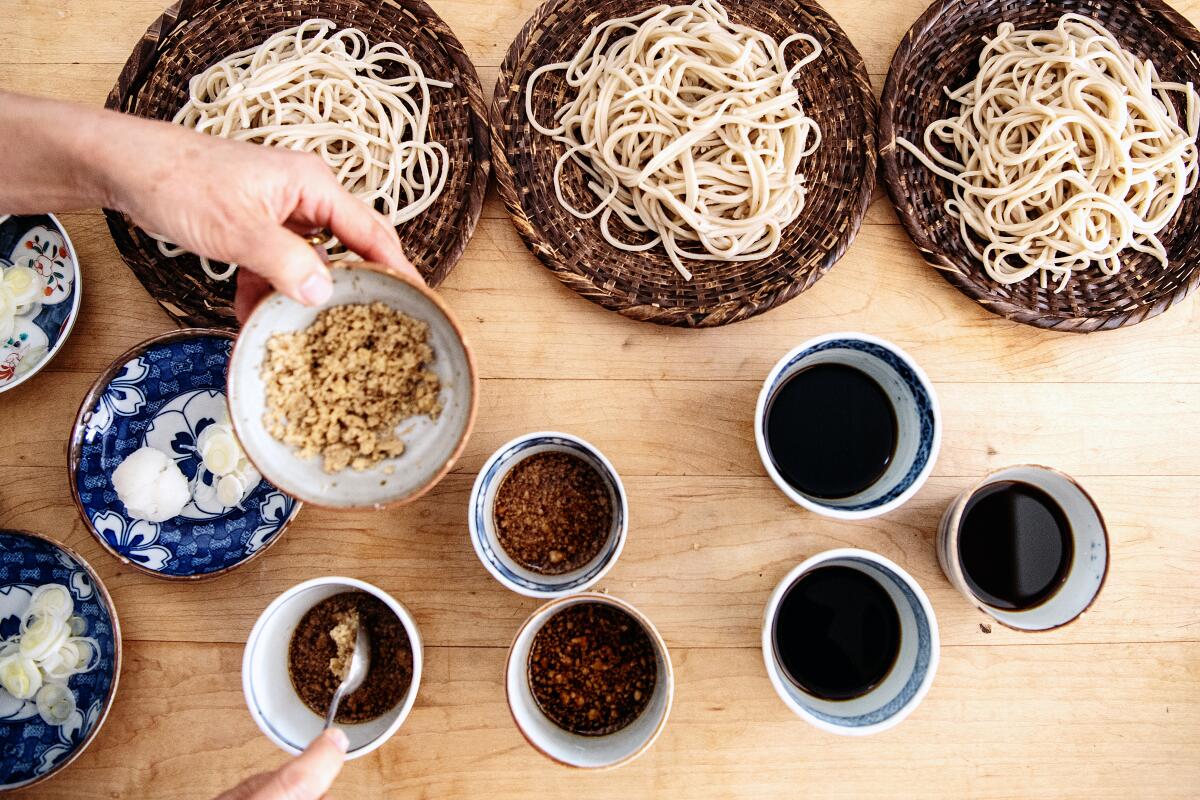
I began teaching soba to cooks but continued apprenticing with soba masters, specifically Takashi Hosokawa, the owner of Edosoba Hosokawa, an artisan soba shop in Ryogoku in Tokyo. I offered to wash dishes, sweep, vacuum soba seeds off the milling floor and work as a server; while going about my tasks, I watched him meditate over soba. It taught me the foundation of Japanese cuisine: freshness, seasonality, simplicity, beauty (not only in the presentation of the food but also a spotlessly clean restaurant) and economy; Hosokawa-san never wasted even a single buckwheat seed if he could help it. It was my duty to pick up the unhusked soba seeds that had fallen on the floor and return them to the hulling machine.
Now, sequestered at home in Los Angeles for most of 2020, I find myself doing soba workshops via Zoom to fill the unending hours. For New Year’s Eve, I made soba, which for the holiday gets a special name, toshikoshi soba, or “passing of the year soba,” because we recognize how the finicky nature of soba serves as a metaphor for life: The long and healthy nature of soba celebrates longevity, and since the noodles are made by cutting the dough with a knife, you can “sever” unpleasant experiences.
Though the holiday is past, it’s never too late for you to eat soba for its benefits. After a year seemingly marked with more hardships than ever before, there’s no more apt dish to help cut ties with 2020 and proffer a better, more resilient outlook to 2021.
The Recipes
Homemade Soba Noodles
Chilled Soba Noodles With Two Sauces
Sonoko Sakai is the author of “Japanese Home Cooking” (Roost Books, 2019) and is a cooking instructor via her website, sonokosakai.com. She lives in Highland Park.
More to Read
Eat your way across L.A.
Get our weekly Tasting Notes newsletter for reviews, news and more.
You may occasionally receive promotional content from the Los Angeles Times.
